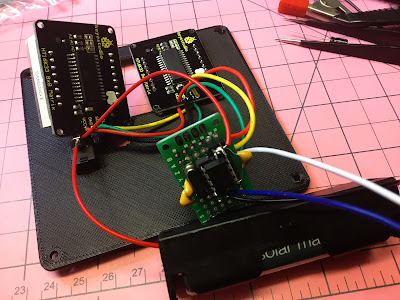Frequency Tester Kit
From time to time I order kits to make, sometimes to see how they are put together, other times because I am interested in a particular result (e.g. a little Christmas decorative tree) but oftentimes the final product may be of some use.
In this instalment of "why did I order that?" I put together a kit for a frequency tester.
When it comes to fact checking, it is of course important to consider "Who watches the watcher?" and this kit does allow a form of calibration whereby the actual frequency of the 20MHz reference crystal can be taken into account for the measurement.
Of course temperature drifts and other factors could mean that calibration may need to be done a number of times before/during usage.
If you want to buy one of these handy little units and/or need a refresher on usage then see this link and/or this link, as for this video and blog I concentrated this time on the construction and (quick!) testing of this kit.
















